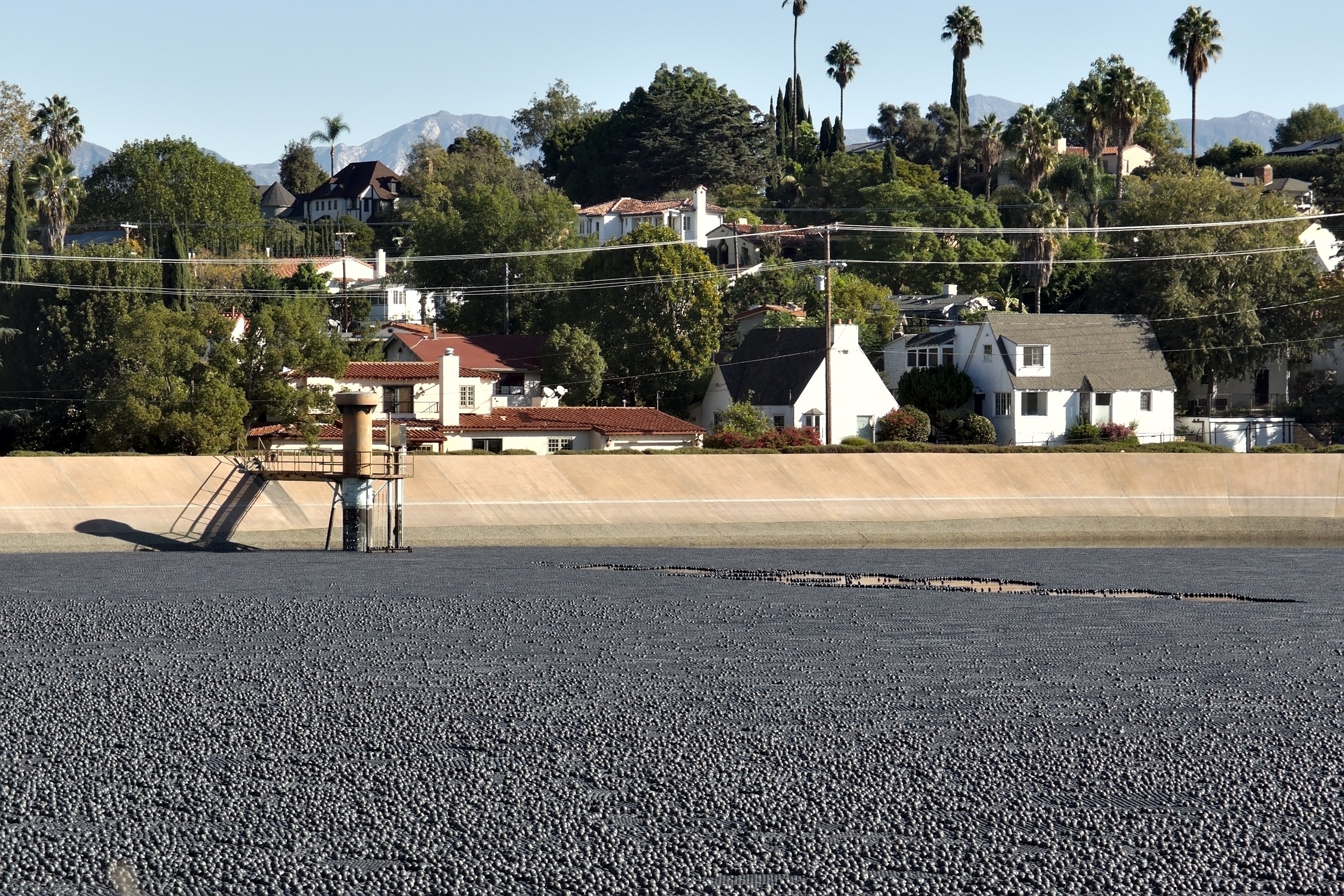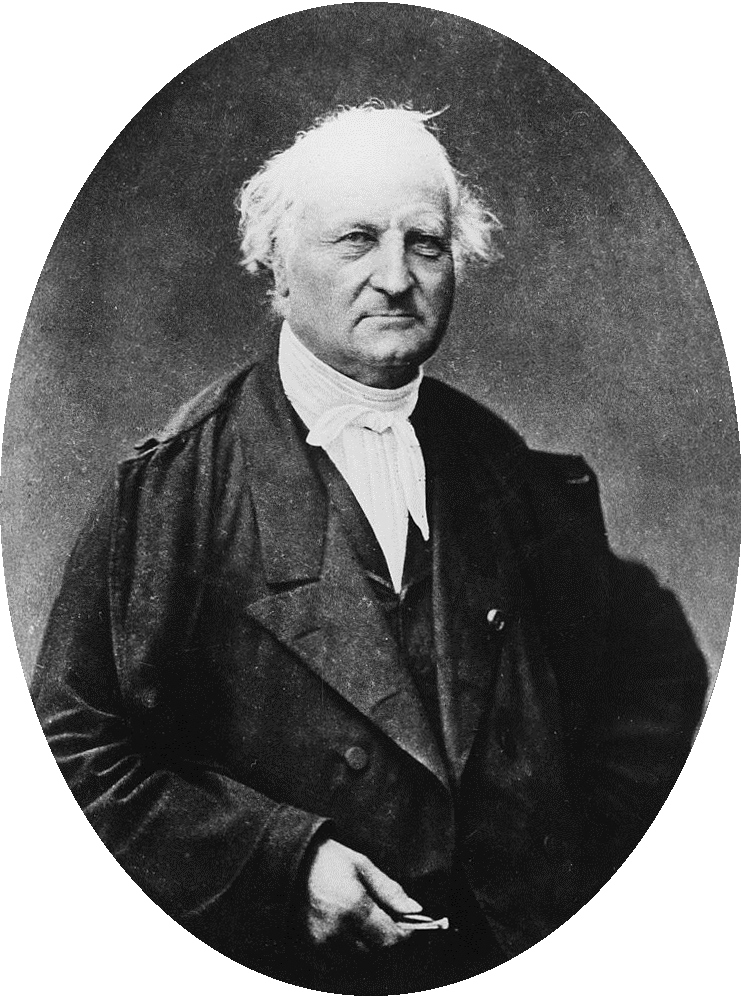|
Bromate
The bromate anion, BrO, is a bromine-based oxoanion. A bromate is a chemical compound that contains this ion. Examples of bromates include sodium bromate, (), and potassium bromate, (). Bromates are formed many different ways in municipal drinking water. The most common is the reaction of ozone and bromide: : Br + → BrO Electrochemical processes, such as electrolysis of brine without a membrane operating to form hypochlorite, will also produce bromate when bromide ion is present in the brine solution. Photoactivation (sunlight exposure) will encourage liquid or gaseous bromine to generate bromate in bromide-containing water. In laboratories bromates can be synthesized by dissolving in a concentrated solution of potassium hydroxide (KOH). The following reactions will take place (via the intermediate creation of hypobromite): : + 2 OH− → Br + BrO + :3 BrO → BrO + 2 Br Human health issues Bromate in drinking water is undesirable because it is a suspected human ... [...More Info...] [...Related Items...] OR: [Wikipedia] [Google] [Baidu] |
Potassium Bromate
Potassium bromate (KBrO3), is a bromate of potassium and takes the form of white crystals or powder. It is a strong oxidizing agent. It is a toxic and carcinogenic compound. Preparation Potassium bromate is produced when bromine is passed through a hot solution of potassium hydroxide. This first forms unstable potassium hypobromite, which quickly disproportionates into bromide and bromate: : 3BrO−(aq) → 2Br−(aq) + (aq) Electrolysis of potassium bromide solutions will also give bromate. Both processes are analogous to those used in the production of chlorates. Potassium bromate is readily separated from the potassium bromide present in both methods owing to its much lower solubility; when a solution containing potassium bromate and bromide is cooled to 0°C, nearly all bromate will precipitate, while nearly all of the bromide will stay in solution. Uses in baking Potassium bromate is typically used in the United States as a flour improver (E number E924). It acts to stren ... [...More Info...] [...Related Items...] OR: [Wikipedia] [Google] [Baidu] |
Perbromate
In chemistry, the perbromate ion is the anion having the chemical formula . It is an oxyanion of bromine, the conjugate base of perbromic acid, in which bromine has the oxidation state +7. Unlike its chlorine () and iodine () analogs, it is difficult to synthesize. It has tetrahedral molecular geometry. The term perbromate also refers to a compound that contains the anion or the functional group. The perbromate ion is a strong oxidizing agent. The reduction potential for the / Br− couple is +0.68 V at pH 14. This is comparable to selenite's reduction potential. Synthesis Attempted syntheses of perbromates were unsuccessful until 1968, when it was finally obtained by the beta decay of selenium-83 in a selenate salt: : → + β− Subsequently, it was successfully synthesized again by the electrolysis of , although only in low yield. Later, it was obtained by the oxidation of bromate with xenon difluoride. Once perbromates are obtained, perbromic acid ca ... [...More Info...] [...Related Items...] OR: [Wikipedia] [Google] [Baidu] |
Bromates
The bromate anion, BrO, is a bromine-based oxoanion. A bromate is a chemical compound that contains this ion. Examples of bromates include sodium bromate, (), and potassium bromate, (). Bromates are formed many different ways in municipal drinking water. The most common is the reaction of ozone and bromide: : Br + → BrO Electrochemical processes, such as electrolysis of brine without a membrane operating to form hypochlorite, will also produce bromate when bromide ion is present in the brine solution. Photoactivation (sunlight exposure) will encourage liquid or gaseous bromine to generate bromate in bromide-containing water. In laboratories bromates can be synthesized by dissolving in a concentrated solution of potassium hydroxide (KOH). The following reactions will take place (via the intermediate creation of hypobromite): : + 2 OH− → Br + BrO + :3 BrO → BrO + 2 Br Human health issues Bromate in drinking water is undesirable because it is a suspected human c ... [...More Info...] [...Related Items...] OR: [Wikipedia] [Google] [Baidu] |
Sodium Bromate
Sodium bromate, the inorganic compound with the chemical formula of NaBrO3, is the sodium salt of bromic acid. It is a strong oxidant. Uses Sodium bromate is mainly used in continuous or batch dyeing processes involving sulfur or vat dyes and as a hair-permagent, chemical agent, or gold solvent in gold mines when used with sodium bromide. Production Sodium bromate is produced by passing bromine into a solution of sodium carbonate. It may also be produced by the electrolytic oxidation of sodium bromide. Alternatively, it can also be created by the oxidation of bromine with chlorine to sodium hydroxide at 80 °C. 3 Br2+3 Na2CO3 → 5 NaBr+NaBrO3+3 CO2 Human health issues Bromate in drinking water is undesirable because it is a suspected human carcinogen A carcinogen is any substance, radionuclide, or radiation that promotes carcinogenesis (the formation of cancer). This may be due to the ability to damage the genome or to the disruption of cellular metabolic proce ... [...More Info...] [...Related Items...] OR: [Wikipedia] [Google] [Baidu] |
Bromine
Bromine is a chemical element with the symbol Br and atomic number 35. It is the third-lightest element in group 17 of the periodic table (halogens) and is a volatile red-brown liquid at room temperature that evaporates readily to form a similarly coloured vapour. Its properties are intermediate between those of chlorine and iodine. Isolated independently by two chemists, Carl Jacob Löwig (in 1825) and Antoine Jérôme Balard (in 1826), its name was derived from the Ancient Greek (bromos) meaning "stench", referring to its sharp and pungent smell. Elemental bromine is very reactive and thus does not occur as a native element in nature but it occurs in colourless soluble crystalline mineral halide salts, analogous to table salt. In fact, bromine and all the halogens are so reactive that they form bonds in pairs—never in single atoms. While it is rather rare in the Earth's crust, the high solubility of the bromide ion (Br) has caused its accumulation in the oceans. Commer ... [...More Info...] [...Related Items...] OR: [Wikipedia] [Google] [Baidu] |
Hypobromite
The hypobromite ion, also called alkaline bromine water, is BrO−. Bromine is in the +1 oxidation state. The Br–O bond length is 1.82 Å. Hypobromite is the bromine compound analogous to hypochlorites found in common bleaches, and in immune cells. In many ways, hypobromite functions in the same manner as hypochlorite, and is also used as a germicide and antiparasitic in both industrial applications, and in the immune system. Preparation Hypobromite salts form upon treating bromine with aqueous alkali, such as sodium or potassium hydroxide. At 20 °C the reaction is rapid. : Br2 + 2 OH−(aq) → Br− + BrO− + H2O In this reaction the bromine disproportionates (some undergoes reduction and some oxidation) from oxidation state 0 (Br2) to oxidation state −1 (Br−) and oxidation state +1 (BrO−). Sodium hypobromite can be isolated as an orange solid. A secondary reaction, where hypobromite spontaneously disproportionates to bromide (bromine oxidation state −1) and ... [...More Info...] [...Related Items...] OR: [Wikipedia] [Google] [Baidu] |
Bromic Acid
Bromic acid, also known as hydrogen bromate, is an oxoacid with the molecular formula HBrO3. It only exists in aqueous solution.''The Merck Index: An Encyclopedia of Chemicals, Drugs, and Biologicals''. 14th Edition. 2006.''Van Nostrand's Scientific Encyclopedia''. Glenn D. Considine. Ninth Edition. Volume 1. p 554 It is a colorless solution that turns yellow at room temperature as it decomposes to bromine.Recipes for Belousov–Zhabotinsky reagents. ''J. Chem. Educ.'', 1991, 68 (4), 320. DOI10.1021/ed068p320/ref> Bromic acid and bromates are powerful oxidizing agents and are common ingredients in Belousov–Zhabotinsky reactions.The Source of the Carbon Monoxide in the Classical Belousov–Zhabotinsky Reaction. ''J. Phys. Chem. A.'', 2007, 111 (32), 7805–12 DOI10.1021/jp073512+/ref> Belousov-Zhabotinsky reactions are a classic example of non-equilibrium thermodynamics Non-equilibrium thermodynamics is a branch of thermodynamics that deals with physical systems that are not in ... [...More Info...] [...Related Items...] OR: [Wikipedia] [Google] [Baidu] |
Bromite
Bromous acid is the inorganic compound with the formula of HBrO2. It is an unstable compound, although salts of its conjugate base – bromites – have been isolated. In acidic solution, bromites decompose to bromine.Egon Wiberg, Arnold Frederick Holleman (2001) ''Inorganic Chemistry'', Elsevier Discovery In 1905, Richards A. H. proved the existence of bromous acid through a series of experiments involving silver nitrate (AgNO3) and bromine. The reaction of excess cold aqueous to form hypobromous acid (HBrO), silver bromide (AgBr) and nitric acid (HNO3): :Br2 + AgNO3 + H2O → HBrO + AgBr + HNO3 Richards discovered that the effect of adding excess liquid bromine in a concentrated silver nitrate (AgNO3) resulted in a different reaction mechanism. From numbers of equivalent portions of acid bromine formed from the previous reaction, the ratio between oxygen and bromine was calculated, with the exact value of O:Br (0.149975:0.3745), suggesting the acid compound contains two oxyg ... [...More Info...] [...Related Items...] OR: [Wikipedia] [Google] [Baidu] |
Silver Lake Reservoir
The Silver Lake Reservoir Complex comprises two concrete-lined basins, Ivanhoe Reservoir and Silver Lake, divided by a spillway, in the Silver Lake community of Los Angeles, California. History The lower body of water was named in 1906 for Water Board Commissioner Herman Silver, and in turn lends its name to the neighborhood. The upper body received its name after the 1819 Sir Walter Scott novel ''Ivanhoe''.''Take Sunset'' article:13 Facts About The Silver Lake Reservoir. The reservoirs are owned and maintained by the Los Angeles Department of Water and Power (DWP), and could provide water to 600,000 homes in downtown and South Los Angeles;. LADWP press release:LADWP Begins Refilling the Silver Lake Reservoir Only the smaller of the two, Ivanhoe, remains online. At capacity, it holds of water. The Silver Lake Reservoir's water resources will be replaced by the Headworks Reservoir, an underground reservoir north of Griffith Park, slated for completion by December 2017. The res ... [...More Info...] [...Related Items...] OR: [Wikipedia] [Google] [Baidu] |
Shade Balls
Shade balls are small plastic spheres floated on top of a reservoir for environmental reasons, including to slow evaporation and prevent sunlight from causing reactions among chemical compounds present in the water. Also known as bird balls, they were developed initially to prevent birds from landing on bodies of water. History Shade balls were originally known as ''bird balls'', as they were developed initially to prevent birds from landing on toxic tailing ponds produced by mining operations.Marco Chown Oved"Shade Balls – Just Add Water" ''Toronto Star'', October 23, 2016 They have also been used by airports to prevent birds from being attracted to nearby drainage ponds thus reducing collisions with planes. Usage by LADWP Starting in mid-2009, the Los Angeles Department of Water and Power (LADWP) put about 400,000 balls in the Ivanhoe reservoir with the main objective of preventing the formation of a carcinogenic chemical, bromate, which forms when sunlight interacts ... [...More Info...] [...Related Items...] OR: [Wikipedia] [Google] [Baidu] |
Oxyanion
An oxyanion, or oxoanion, is an ion with the generic formula (where A represents a chemical element and O represents an oxygen atom). Oxyanions are formed by a large majority of the chemical elements. The formulae of simple oxyanions are determined by the octet rule. The corresponding oxyacid of an oxyanion is the compound . The structures of condensed oxyanions can be rationalized in terms of AO''n'' polyhedral units with sharing of corners or edges between polyhedra. The oxyanions (specifically, phosphate and polyphosphate esters) adenosine monophosphate ( AMP), adenosine diphosphate (ADP) and adenosine triphosphate (ATP) are important in biology. Monomeric oxyanions The formula of monomeric oxyanions, , is dictated by the oxidation state of the element A and its position in the periodic table. Elements of the first row are limited to a maximum coordination number of 4. However, none of the first row elements has a monomeric oxyanion with that coordination number. Instead, ca ... [...More Info...] [...Related Items...] OR: [Wikipedia] [Google] [Baidu] |





